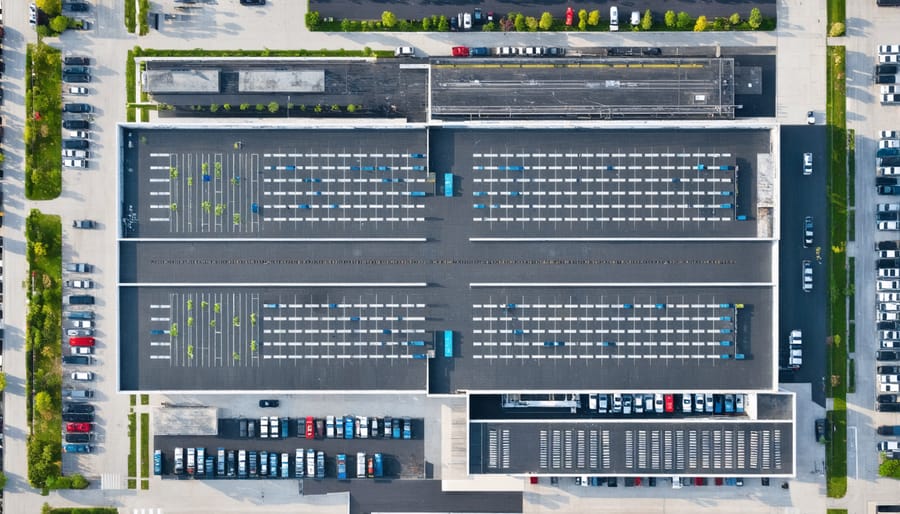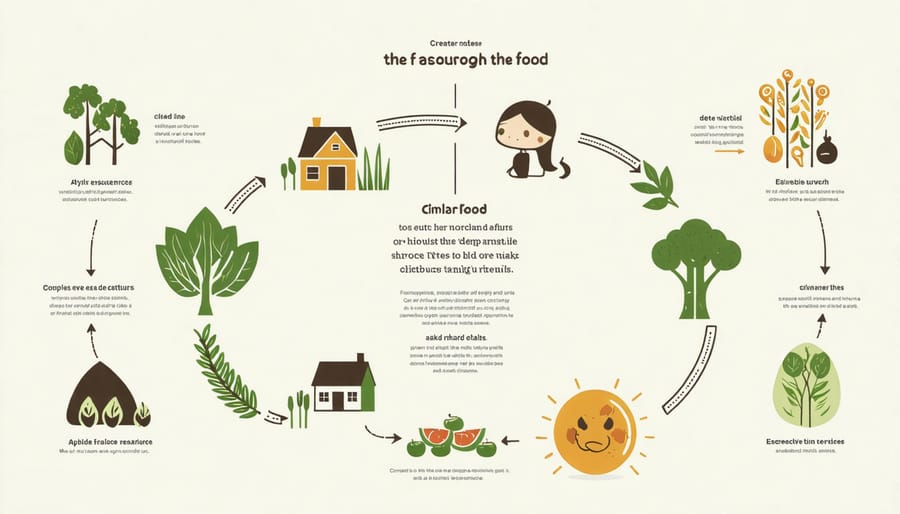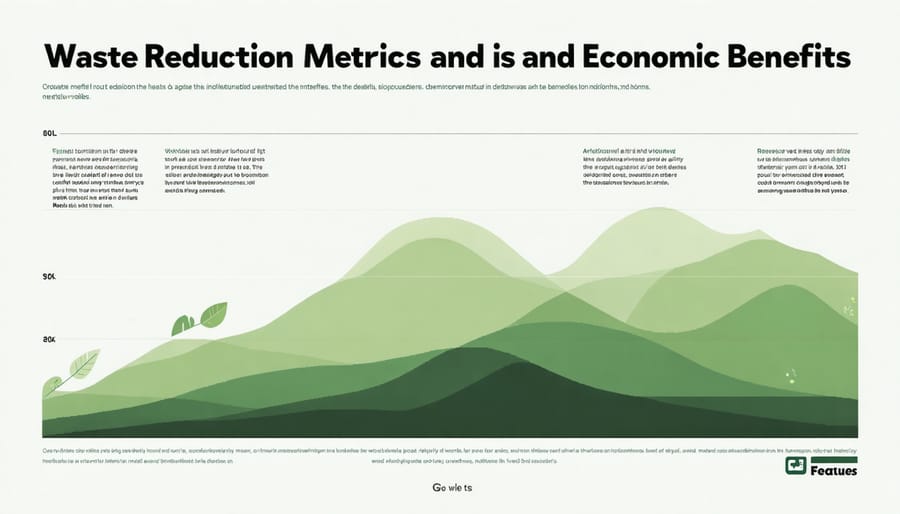Toronto’s innovative circular economy initiative has revolutionized urban waste management, transforming the city’s approach to resource utilization and setting a new standard for sustainable urban development across North America. By implementing a comprehensive waste-to-resource program in 2019, the city has successfully diverted 70% of commercial waste from landfills while generating $50 million in new revenue streams for local businesses.
The program’s success stems from three interconnected strategies: establishing material recovery facilities that process and redistribute commercial waste, creating a digital marketplace for recovered materials, and incentivizing businesses to redesign their supply chains around circular principles. This systematic approach has not only reduced environmental impact but also created over 500 new jobs in the green economy sector.
Leading Canadian manufacturers have embraced this circular model, with companies like CircularTO demonstrating how recovered materials can be transformed into high-value products while maintaining profit margins. Their success offers a practical blueprint for businesses nationwide, proving that environmental responsibility and economic growth can coexist effectively.
For cities and businesses looking to replicate Toronto’s success, this case study provides concrete evidence that circular economy initiatives deliver measurable environmental and economic benefits when implemented with strategic planning and strong stakeholder engagement.
Toronto’s Food Hub: A Circular Economy Success Story

Project Implementation and Key Stakeholders
The Toronto Circular Economy Hub launched in 2021 through a collaborative effort between the City of Toronto, local businesses, and environmental organizations committed to implementing circular economy principles. The project brought together key stakeholders including the Toronto Environmental Alliance, the Toronto Region Board of Trade, and over 50 local businesses ranging from startups to established corporations.
Leading the initiative, the City of Toronto’s Economic Development and Culture Division appointed a dedicated project team to coordinate activities and ensure smooth implementation. This team worked closely with waste management experts, urban planners, and sustainability consultants to develop practical strategies for businesses transitioning to circular models.
Community engagement played a crucial role in the project’s success. Local business improvement areas (BIAs) helped facilitate connections between participating businesses, while neighborhood associations organized workshops and information sessions for residents. The project team established a mentorship program pairing experienced circular economy practitioners with businesses new to the concept.
Notable participants included TerraCycle Canada, which implemented a specialized recycling program for hard-to-recycle materials, and Second Harvest, which expanded its food recovery network. The Toronto Tool Library scaled up its sharing economy model, while local manufacturer Wellington Furniture launched a successful furniture repair and refurbishment service.
Regular stakeholder meetings ensure ongoing collaboration and knowledge sharing among participants. A steering committee comprising representatives from business, government, and community organizations meets quarterly to review progress and adjust strategies as needed. This collaborative approach has created a robust support system for businesses transitioning to circular practices.
Infrastructure and Technology Integration
The successful implementation of a circular food economy relies heavily on sophisticated infrastructure and integrated technology systems. Smart logistics platforms coordinate the collection and redistribution of surplus food, while blockchain technology ensures transparent tracking from source to final destination. In Toronto, organizations like Second Harvest utilize route optimization software and real-time inventory management systems to efficiently connect food donors with recipient agencies.
Digital platforms play a crucial role in connecting stakeholders across the circular food network. Mobile apps enable restaurants and retailers to post their surplus food availability, while recipient organizations can quickly respond and arrange collection. Temperature-monitoring sensors and specialized transportation equipment ensure food safety throughout the supply chain.
Cloud-based data analytics help predict food surplus patterns and optimize distribution routes, reducing both food waste and transportation emissions. Advanced processing facilities convert inedible food waste into compost or biogas, while specialized packaging solutions extend food shelf life and reduce waste.
As noted by Sarah Thompson, Director of Innovation at Smart Cities Canada, “The integration of IoT devices and AI-driven analytics has revolutionized how we manage food resources in urban environments. These technologies enable real-time decision-making and efficient resource allocation.”
Infrastructure investments include modernized storage facilities with variable temperature zones, clean energy-powered transportation fleets, and automated sorting systems. Community food hubs serve as central points for collection and redistribution, equipped with modern preservation technology and processing capabilities.
Looking ahead, emerging technologies like AI-powered waste reduction systems and smart packaging solutions continue to enhance the efficiency of circular food systems, making them more accessible and cost-effective for businesses of all sizes.

Measurable Impact and Benefits
Waste Reduction Metrics
The implementation of circular economy principles at Toronto’s Food Terminal has yielded impressive waste reduction metrics. Since launching their comprehensive resource recovery program in 2021, the facility has achieved a 75% reduction in organic waste sent to landfills, diverting over 12,000 tonnes of food waste annually toward composting and biogas production.
Key performance indicators show that 60% of recovered organic material is now processed into high-quality compost, while 30% is converted to biogas, generating enough energy to power 500 local homes. The remaining 10% is transformed into animal feed supplements, creating additional value streams.
Financial metrics demonstrate the program’s viability, with operational costs decreasing by 35% through reduced waste management fees and new revenue streams from recovered materials. Local businesses participating in the program report average savings of $15,000 annually on disposal costs.
According to Sarah Thompson, Director of Sustainability at the Ontario Food Terminal Board, “Our tracking systems show that for every dollar invested in waste reduction infrastructure, we’re seeing $3.50 in returns through cost savings and new revenue opportunities. These numbers prove that circular economy initiatives can deliver both environmental and economic benefits.”
The program’s success has inspired similar initiatives across Canada, with three other major urban centers now developing comparable systems based on Toronto’s model.

Economic and Social Benefits
The circular economy model generates significant economic advantages while fostering social prosperity within communities. Studies show that businesses implementing circular practices typically reduce operational costs by 15-25% through resource optimization and waste reduction. In Canada, circular economy initiatives have created thousands of new jobs across various sectors, from recycling facilities to innovative design firms.
According to the National Zero Waste Council, circular business models have contributed to a 12% increase in local employment opportunities, particularly in areas like repair services, remanufacturing, and sustainable logistics. These jobs often provide stable, long-term employment while requiring diverse skill sets, from technical expertise to creative problem-solving abilities.
Cost savings extend beyond individual businesses to benefit entire communities. Municipalities adopting circular practices report reduced waste management expenses, with some cities saving millions in landfill costs annually. These savings often translate into improved public services and infrastructure investments.
The social benefits are equally compelling. Circular initiatives frequently lead to stronger community connections through sharing economies, repair cafes, and local manufacturing networks. Small businesses particularly benefit from increased customer loyalty and community support when they embrace circular practices.
For example, Toronto-based furniture manufacturer Urban Wood Goods has created 30 new jobs while diverting 100,000 kg of wood waste from landfills annually, demonstrating how circular practices can align profitability with environmental stewardship and community development.
Implementation Lessons for Other Cities
Cities looking to implement similar circular economy initiatives can learn valuable lessons from successful community-based sustainability initiatives across Canada. First, start with a thorough assessment of local resources and waste streams to identify the most impactful opportunities. This initial mapping helps create targeted solutions that address specific community needs.
Building strong partnerships between municipal governments, local businesses, and community organizations is crucial. These collaborations should be formalized through clear agreements that outline roles, responsibilities, and shared objectives. Expert consultation with sustainability professionals and urban planners can help avoid common implementation pitfalls.
Effective public engagement and education programs are essential for success. Communities that invest in awareness campaigns and practical training sessions see higher participation rates and better long-term adoption of circular practices. Consider implementing pilot programs in specific neighborhoods before scaling city-wide to test and refine approaches.
Data collection and monitoring systems should be established early to track progress and demonstrate value. Regular reporting helps maintain stakeholder support and enables continuous improvement. Financial sustainability is also critical – successful programs often combine municipal funding with private sector investments and innovative revenue streams.
Start with quick wins that demonstrate immediate benefits while building toward longer-term goals. This approach helps maintain momentum and public support. Finally, develop flexible frameworks that can adapt to changing circumstances and new opportunities. Cities that remain agile in their implementation strategies are better positioned to overcome challenges and achieve lasting success in their circular economy initiatives.
The transition to a circular economy represents a significant opportunity for Canadian businesses and communities to lead in sustainable innovation. As demonstrated through successful implementations across the country, circular economy principles not only reduce environmental impact but also create new business opportunities and strengthen local economies. Looking ahead, industry experts project continued growth in circular business models, supported by advancing technology and increasing consumer demand for sustainable solutions. With government support, corporate commitment, and community engagement, Canada is well-positioned to accelerate its circular economy initiatives. The key to success lies in collaboration, innovative thinking, and the willingness to reimagine traditional business models. By embracing these principles today, organizations can secure their place in tomorrow’s sustainable economy while contributing to a more resilient and prosperous Canada.
